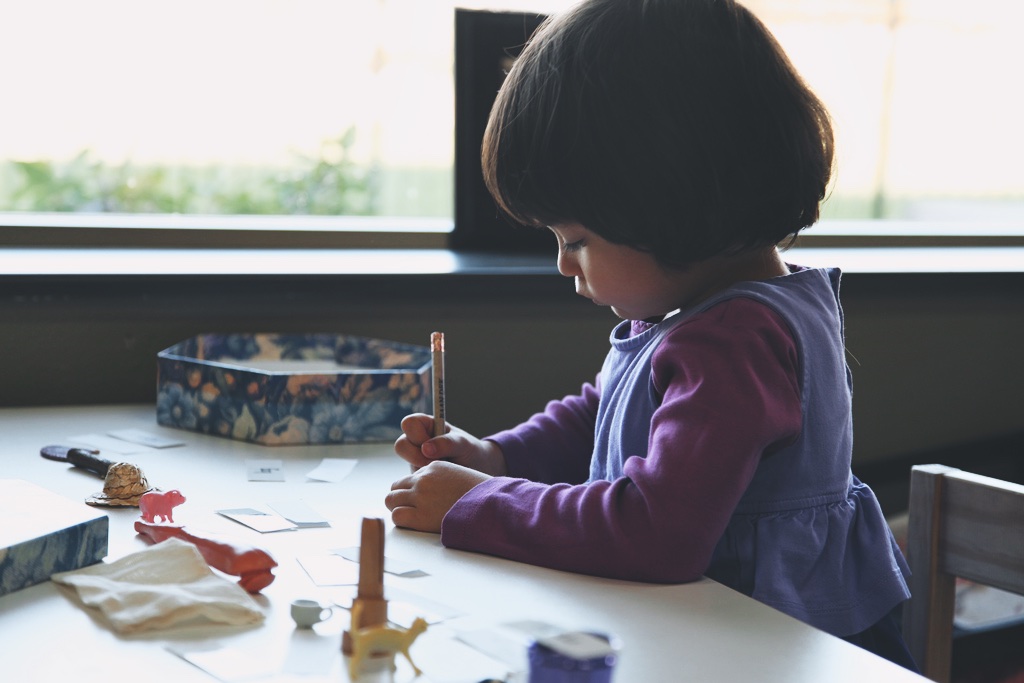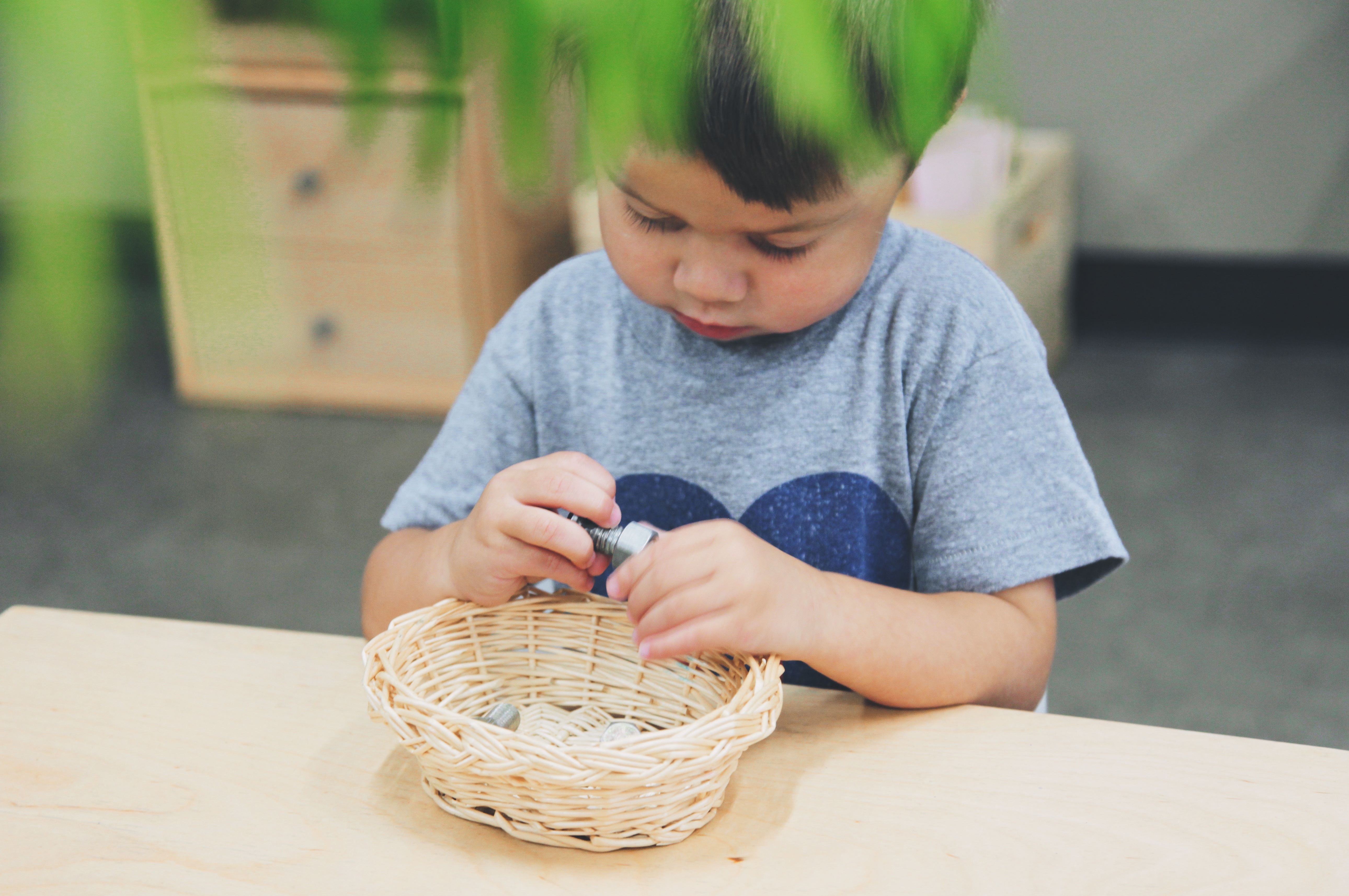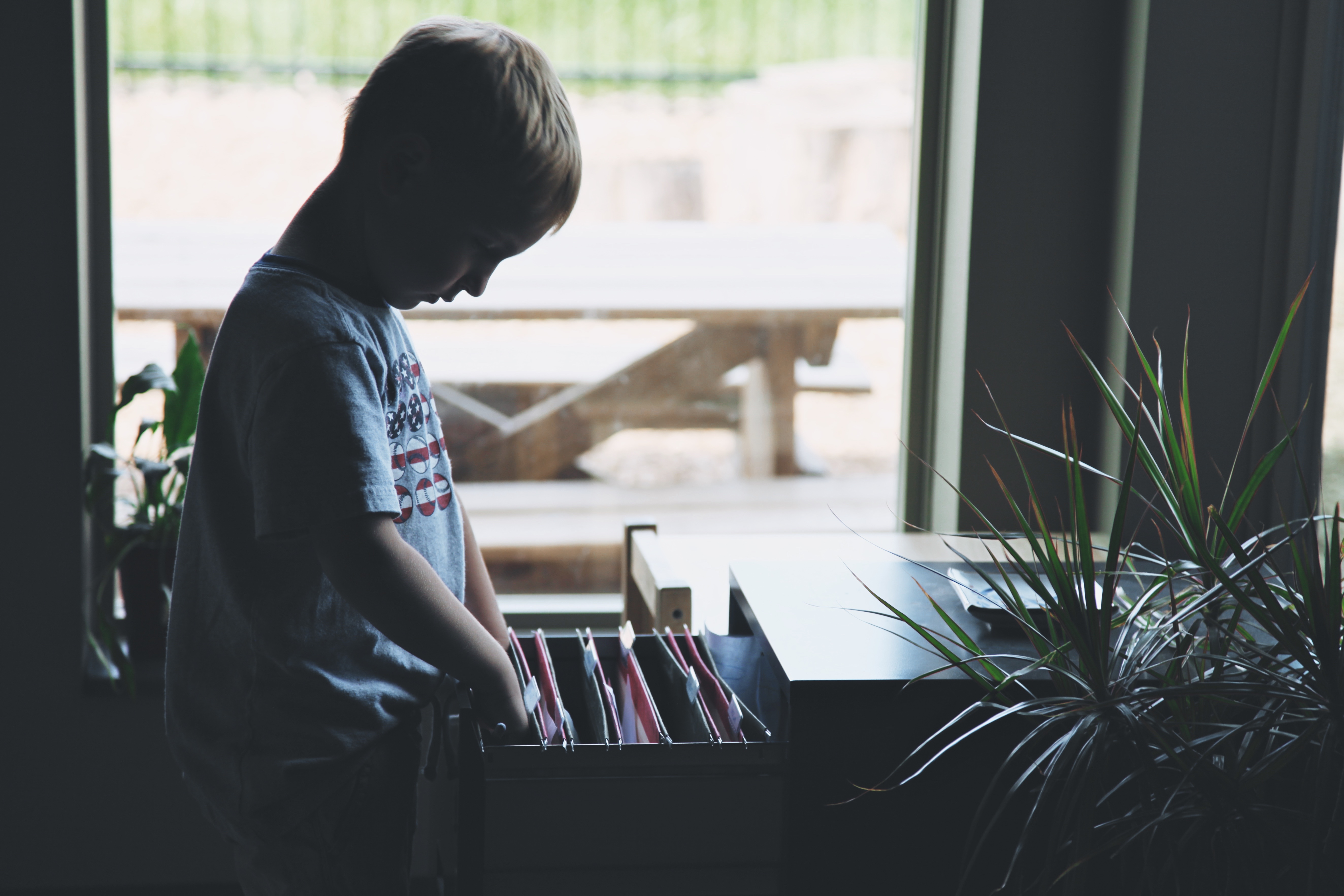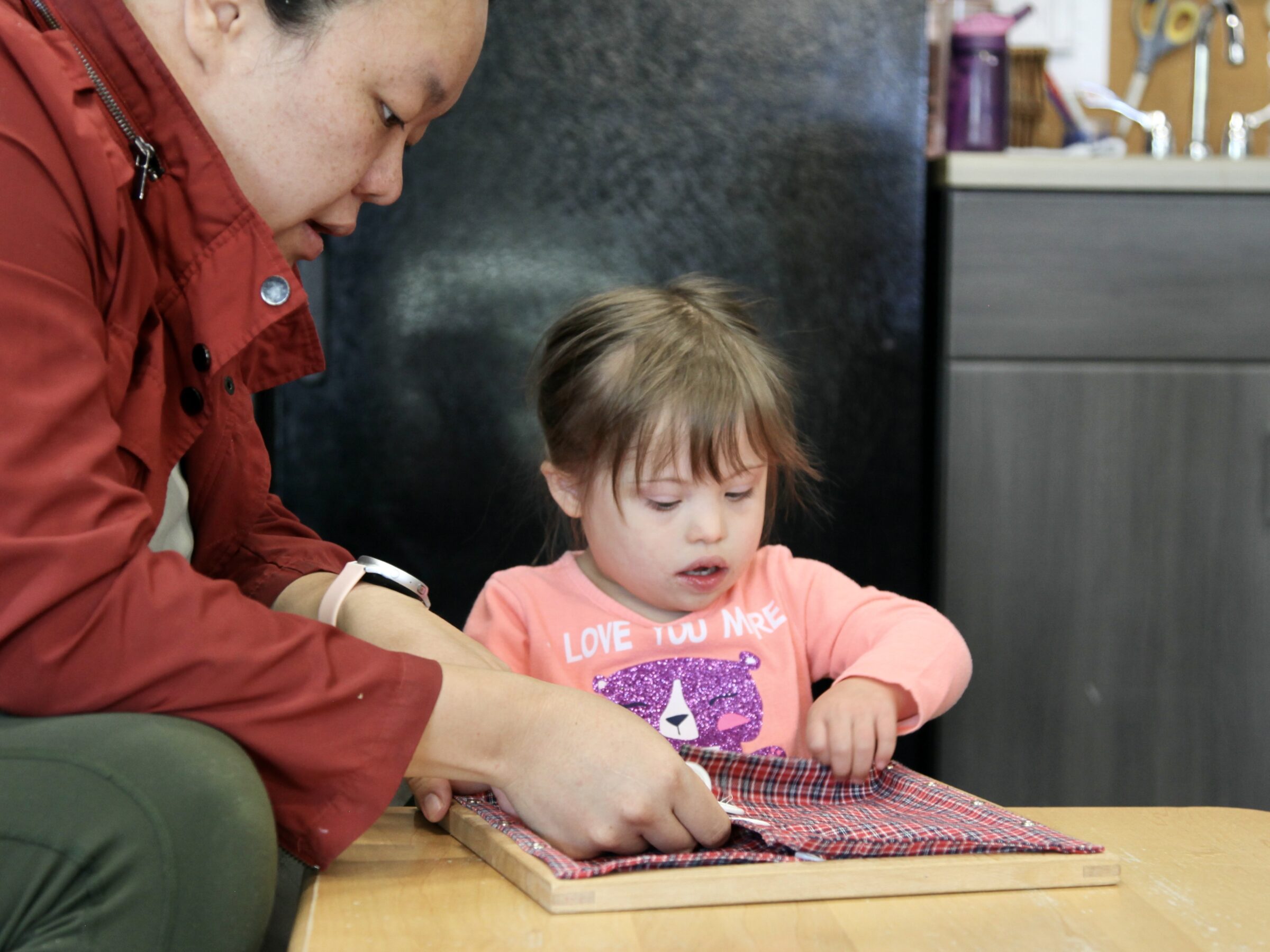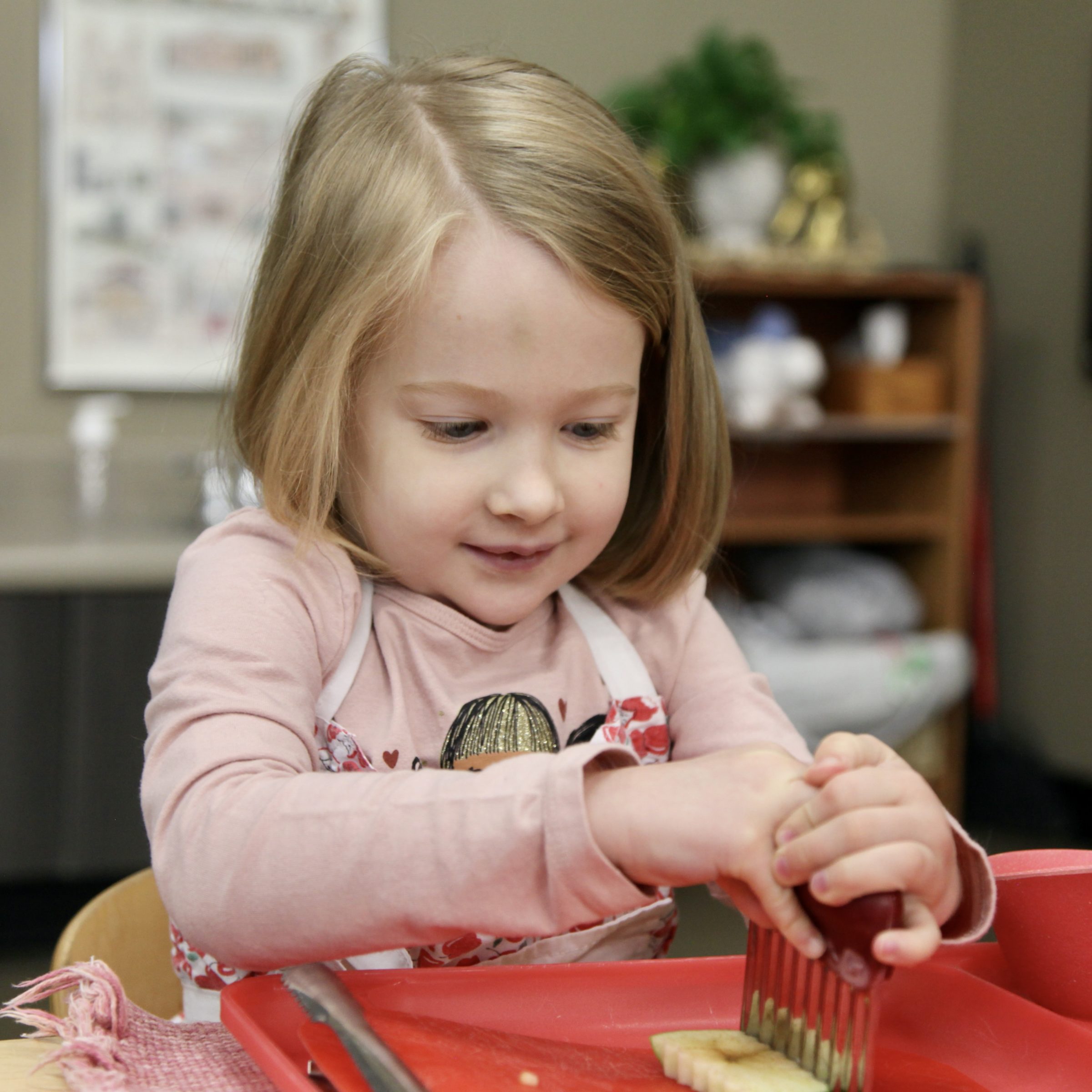Individualized Education
Podcasts
What do you imagine when you think of a “school?” How about “teacher?”
Montessori asks us to put aside some of our expectations about these phrases, even what we expect children to be able to do.
Observing a Montessori classroom, the children are not all oriented in one direction, paying attention to a teacher at the front of the classroom who is giving instruction. The children are not all the same age, they’re definitely not all doing the same thing.
Let’s look at a Primary Montessori classroom, for children 2.5-6.
It’s typical to see many small, one-person tables. There are low shelves with materials displayed beautifully. Children are working mostly independently, though always interacting with one another. Children are sitting at rugs on the floor, or in a chair off to the side observing, or standing, completely engaged with careful observation of someone else’s work. There is constant movement, the busy, quiet, joyful hum of an efficient machine. There is an electricity in the air, a contentment that comes when children are allowed to follow their own development, their interests and abilities fed by a well-trained, caring guide.
How is it possible to meet the needs of thirty children across the span of four years?? How is each child able to work independently? How is this freedom and discipline possible with such young children?
The answer is, Individualized Education.
It might be an easy trap to fall into, if all children in the class were the same age: that every three-year-old is ready for the same thing, that every five-year-old has common interests, or at least that they can all attend to the same lesson at the same time.
In a Montessori classroom, we have the gift of children across a range of ages. This is such a benefit, for so many reasons (read one reason we love having both older and younger children in the classroom here), but one obvious aid is that we cannot pretend one material, one presentation, would meet the needs of all the children all at the same time.
Each child is unique. Even one four-year-old and another four-year-old, even siblings, what one child was like at two and what the other is like at two, each child is different, with differing aptitudes and struggles, different interests. Each child is on their own path of development.
There are skills, abilities, concepts each child masters. This is why the set of materials doesn’t change for every child. There is a typical progression. Most of the time, a child needs to have some mastery of pouring prior to being successful pouring a glass of juice for their friend, or making multiple trips to pour water for Land and Water Forms. This typical path is the way the materials are arranged on the shelf — in order of difficulty, left-to-right, top-to-bottom.
When a child is ready for a material, how long they work with the material on a given day, or over multiple days to master the skill or concept, the enthusiasm for any material, eagerness or timidity with new and challenging experiences — these qualities all vary dramatically from child to child, even for one child between materials.
“No one will tell you you didn’t work hard enough.”
This is why we have individualized education. Giving each child what they need, when they need it. Even how we present a material, whether it be first thing in the morning, after a child has had a minute to sit and observe, inviting a child to observe you giving the intended presentation to another child, asking a more experienced child to give the presentation to a child, these are just some of the myriad options we employ when presenting a child with a new material.
It is so important for Montessori guides to be trained observers. Without observations, we just have these really cool objects, and are giving them to children without any rhyme or reason, following the typical path instead of This Child’s Path.
We observe the classroom. Are there universal experiences we notice about the group? We observe each child. What is this child doing? What, if anything, do I need to do about it? Does this child need a new work? A reminder? Time and Space? An opportunity to practice? A friend to show off to?
The physical setup of the classroom, the Prepared Environment, naturally lends itself to meeting the needs of each individual child.
There are one-person tables. The natural consequence of this is that a child works alone, with one material, or receives a presentation alone. There is much freedom — there are tables throughout the classroom, so a child gets to choose where they want to work, and rugs are also available, as well as observation chairs, for a child to sit and watch, as helpful a teaching tool as direct instruction. But the idea of working alone is not lonely; instead it means that you are only responsible for meeting your own developmental needs, to following that little voice inside you that is calling out to build, to sort, to read, to count, to move, to help, to watch.
There is a three-hour work cycle during the morning. During this time, the children are free to choose any material they have been presented, to work with it appropriately as long as they choose, and to return it to the shelf ready for the next person to use.
This means some children come in and immediately pick the same work every morning, starting their day with an old, reliable friend, before diving into the latest challenge. A child might take out something that was just shown to them yesterday, wanting to master this new skill. A child might take out a work, complete it once, put it away, choose something else, repeating the cycle countless times before the morning is through.
All of these are options. No one will tell you you didn’t work hard enough. No one will tell you it’s time to be done concentrating.
Throughout this open work cycle, the guide is observing, taking notes, checking in with children. Sometimes giving lessons, sometimes giving reminders, sometimes putting her intended plan aside when a clear need or developmental moment shows itself, never interrupting concentration.
We Follow the Child by making careful observations, knowing each child deeply, learning to predict what they might be ready for, and ourselves being ready for the child in that moment, ready to pair The Child with The Material at precisely the right moment, like catching a train as it flies past.
Through observation and training, there are signs a child is ready for something, needs a reminder, needs a new challenge, and we take note of these signs. But sometimes, the train makes and unexpected shift, moving at a different speed, or in a new direction, and we must be flexible in these moments. We do not follow the old path arbitrarily, we dance with the child, taking note of what we might have missed, reflecting, meeting this new and different need. The Child’s Development is in charge, not the Adult’s Will.
Individualized Education is one of the hardest things about Montessori to comprehend. It’s also one of the most important unique aspects of this work, what makes all the magic possible.
Listen to our podcast on Individualized Education here!
Written by:
Charlotte Snyder
